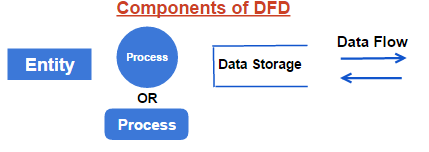What is a Data Flow Diagram?
Data Flow Diagram Definition
Data flow diagram sometimes also known as DFD as name implies is a diagram of graphical representation that is going to explain how the data is processed in a system. Graphical representation render the sources of data and how all the data interact to each other so that it can produce common output. A data flow diagram determine mainly 3 aspects to draw any flow diagram first one is to identify external inputs and outputs, second one is to determine how input and output relate to each other and last one is determine the graphic connection that turn into desirable result. These diagram going to help business development and design teams so that they can visualize data and how the data is processed and identify the results and improve certain aspects. Data flow Diagram are mainly of two types Logical DFD and Physical DFD. Logical one more concentrate on system process and data flow in the system. Typical example of logical DFD is how data move from one entity to another and how entities are relate to each other in online sales system. Physical concentrate more on the design rather than system functionality.
DFD Components
Components are used in drawing business logic diagram. All the components are applied with some rules so that the execution of the whole system done correctly. A DFD diagram usually comprises of four components and all of them represented by four simple symbols. Symbols are External entities, processes, data flows, data stores are four mainly used components in DFD.
- External entities:Entity can be an input or output or we can say a source or destination. They are represented by a rectangle with their respective names.
- Process:Process represent by a circle or a rounded-edged rectangle. Process is the activity and action taken on the data.
- Data Storage:Data storage are of two variant type which is going to hold place for information in the system. Data storage represented as rectangle with absence of both smaller sides and one side.
- Data flow: Movement of data in the system which is shown by pointed arrow in the direction in which data moving.

Advantages of DFD
By using the simplicity of notations make user to understand the process and also make easier to modify changes in future by more accurately understand and describe the business activity. It also provide methods to avoid mistakes at early stage which helps to prevent system failure. DFD describe the boundaries of the system which is beneficial to communicate to the user of the existing system. It also provide a straight forward graphical technique which is easy to recognise and also providing detailed representation of system components. It also provide the logic behind the data flow within the system.


